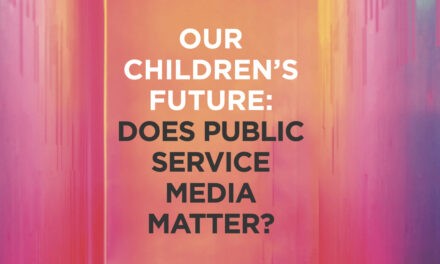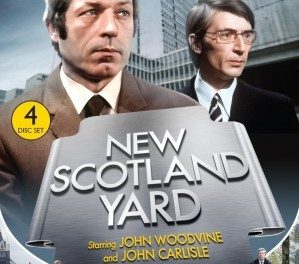This latest offering to CST has partly been inspired by my recent research and planning for a module on American Contemporary Television Drama, and partly inspired by a long fascination with the television anthology series – its place and status in the television landscape. The module, devised by Anthony N Smith at University of Salford, has been handed into my care whilst he undertakes some serious research of his own – and good luck to him. His (temporary) loss has been my gain, because whilst creating a lecture on the evolution of American network television drama, I found an excuse to introduce a brief discussion on the American television anthology series. Further, with the recent critical acclaim of Charlie Brooker’s Black Mirror, and Channel 4’s recent offering of Electric Dreams (not so critically acclaimed), a brief look at the format seems timely and topical.
Another reason for writing on the TV Anthology series is that although the form itself has been a constant if uneven presence throughout all the television periods – from the era of scarcity to the ‘post-television’ era – there has been very little written on the form; certainly, no dedicated study of any note.
This seems odd when you consider that its early American incarnation offered what seemed to be a bold intervention in the normal television schedules, and to conventional television drama at the time. They can also be seen as a prototype for the industry in that they offered something similar to the later advent of HBO and other like-cable dramas that promoted the idea of ‘Quality TV’. They offered something different, challenging, unhitched from standard fare. As Barnouw (1990) observes, starting in 1953 and gathering strength over the next few years, the anthology series offered something different to the then standard formula-bound episodic series in America. Whilst the episodic series and much of television in general had its origins in radio, the anthology series had roots in the theatre. The anthology series was, to many involved, a writer’s medium, and not only did it launch the careers of many writers, but actors too (Rod Steiger in Marty, Goodyear Theatre Playhouse, 1953) and in some special cases served to present dramas as unofficial pilots for what would become full-blown drama series. The anthology series also offered what to some was controversial content. They could be experimental in nature – either in style, script-length, or content. As Barnouw states, writers loved them especially because the anthology series offered a certain amount of creative freedom – “There were no specifications as to mood, characters, plot, style, or locale – at least, not at first.” (1990: 154). Such was the popularity of the anthology series on American television that within a couple of years all three of the big networks were producing them in big numbers. The list of anthology series produced in this period is telling: Philco Television Playhouse, Goodyear Television Playhouse, Kraft Television Theatre, General Electric Theatre (hosted by Ronald Reagan), NBC Matinee Theatre, and many more. A peculiarity of the American versions in particular, were that they were often introduced or ‘hosted’ by various film stars and celebrities, aimed at giving them a certain amount of kudos or star quality.
And although they offered a different stand-alone drama each week, featuring different casts, writers, and directors, they could also be thematic, lending themselves to particular genres such as science fiction.
Charlie Brooker’s Black Mirror, a science fiction anthology series, first broadcast on Britain’s Channel 4, but since removed to the higher monetary echelons of Netflix, has attracted lots of critical attention in most of these respects. This attention has largely been around Brooker himself, a popular satirist and media critic. But the series has also been praised for the quality of its writing, its controversial and often topical content, its ambitious scope, and more latterly, with its move to Netflix, for its production values and its willingness to play with the television drama form (episode duration times). In all these respects, Black Mirror more than most other anthology series harks back to the beginnings of the anthology series and the form’s impact on early American television in particular. In fact, Black Mirror has been likened to what some critics and fans regard as the benchmark and model for all anthology series, The Twilight Zone (1959-1964).
There are some reasonable comparisons to be made between Rod Serling’s The Twilight Zone and Charlie Brooker’s Black Mirror, not least between the two creators/writers/producers themselves. Like Brooker, Rod Serling was a controversial figure in television. Serling, a writer, often found himself at odds with television executives who, under pressure from advertising sponsors, felt Serling’s scripts were overly political, subversive, and controversial. In fact, these elements were initially another feature of the television anthology series and arguably an expectation of all or most anthology series still today. Whilst Brooker’s dark, often satirical, and disturbing speculations and probing on contemporary and future society lend themselves perfectly to an experimental and progressive Channel 4 brand, and to the freedoms of a streaming service such as Netflix, such controversial content in early American anthology series, although not in breach of FCC regulation, caused unease in certain influential quarters. Again, Barnouw draws attention to the potentially subversive element of early American anthology series and how this contributed both to their initial popularity, but ultimately to a loss of creative freedom and subsequent relative conformity.
Whilst writers, audiences, actors and directors loved them, one group hated them; the advertisers and sponsors. Due to the economic model of American network television, these advertisers held the purse strings and consequently a lot of power. Unlike the formula-bound episodic drama series of normal television, the anthology series promoted diversity, something that put them at odds with advertisers. This economic model is something that Brooker’s Black Mirror has not had to contend with, but the legacy of non-conformity still remains.
Barnouw states that television advertisers were selling magic, dreams, and the American ideal. “In the commercials there was always a solution as clear as a snap of a finger: the problem could be solved by a new pill, deodorant, toothpaste, shampoo… The solution always had a finality.” (1990: 163). However, anthology writers took a different stance on American society. Unlike Hollywood and popular television programming, they populated their dramas with non-beautiful heroes and heroines, low settings and locales. They took the same problems posed by commercials and made them complicated. Anthology dramas “made commercials seem fraudulent.” (1990: 163). Such was the ire and influence of the ad agencies that by 1955, sponsors and ad agencies began demanding revisions to scripts and greater control over content. In was in these circumstances that Rod Serling worked and which influenced his later work and approach on The Twilight Zone. The demands of sponsors and ad agencies forced Serling to be clever. He used the science fiction genre for his anthology series as a means of distancing the often subversive, political, and disturbing content from the real-life of everyday America, knowing that the genre had been considered up until then largely a children’s genre, and therefore not taken seriously. Yet even though the audience for The Twilight Zone still had a large youth demographic, it also attracted large numbers of adult viewers too. In attracting both young and adult viewers alike, this anthology series did something that few television programmes had done before – or since.
The Twilight Zone showed the potential of the anthology series for producing original, challenging, and quality television drama, and in ways that seem to mirror strategies in more contemporary ‘quality TV’ drama. Television drama style and aesthetics (a recent concern of academics), also complex narratives, arguably show an influence of the anthology series at its best. Some techniques such as the close up and the lingering shot that have since become markers of contemporary ‘quality TV’ and their use of narrative spectacle came almost directly from the anthology series where initially live production was not seen so much as a limiting factor, but as an influence on the kind of drama to be explored. The anthology series found its niche in the short form, preferring compact, psychological dramas. In these respects, the close-ups and the lingering shots became all-important as “a sign of human drama].” (Barnouw, 1990: 160).
Brooker’s Black Mirror, of course, has not had to deal with the economic and moral system encountered by these early American anthology series’. Similarly, more sophisticated advances in media technology offers a range options not available to early anthology series producers and writers. But it is interesting to note how Black Mirror embraces the spirit of the anthology series in its challenging of the very media institutions it exists in. The same cannot be said for Channel 4’s Electric Dreams and its adaptations of the Philip K Dick short stories oeuvre. As Philips (2017: 2) observes in relation to Black Mirror, by constructing narratives about “the corruption of traditional media institutions and the destruction of traditional media in the face of new technologies and storytelling forms”, Black Mirror not only draws attention to the narrative “Netflix constructs about itself”, but positions itself within discursive contexts. It could be argued that in its stronger moments the anthology series has a tendency to exist as a discursive and disruptive context.
My study here has largely been on American developments of the anthology series, and this approach has deliberately left out the British experience of the television anthology series. It could be argued that the British anthology series, largely as a result of differing economic models of television, is a slightly different animal to the American experience. But with examples such as the BBC’s Play for Today series (1970-1984), and others, the themes of quality, even political and experimental content, short-form, and of it being a writer’s medium, are compatible and could serve to make up a poetics of the form.
Although the anthology series has waxed and waned over the decades of television broadcasting, there have also been some interesting developments of the form. American Horror Story (FX 2011 -), for instance, and Fargo (FX 2014) provides not so much stand-alone episodes, but stand-alone seasons or self-contained mini-series. Both show a development of the form that embraces the changes in contemporary television and the viewing experience. For Joseph Adalian of the Vulture (2017), the anthology series and short-form storytelling is making a come-back and the reason is that streaming services have made them economically viable again and they are more esasily digestible and accessible piecemeal for audiences not willing to follow long story arcs. The short-form is back.
Works cited:
Barnouw, E., 1990. Tube of plenty: The evolution of American television. Oxford University Press. (149)
Boddy, W., 1993. Fifties television: The industry and its critics (Vol. 7). University of Illinois Press. (85)
Philips, J. and Brookey-Instructor, D.R., 2017. TV in a coma… I know it’s serious: Black Mirror and the struggle between traditional media and digital media. Accessed at: http://thejasonverse.com/blackmirror.pdf (2017/11/03)
Presnell, D. and McGee, M., 2008. A Critical History of Television’s The Twilight Zone, 1959-1964. McFarland.
Wheatley, H. ed., 2007. Re-viewing Television History: Critical Issues in Television History. IB Tauris.
Kenneth A Longden has lectured as part of the academic staff at Liverpool John Moores University in Media, Critical, and Creative Arts, and studied for a MPhil/PhD in Transnational Narratives at The University of Winchester. He is a Fellow HEA, and a Peer-Reviewer for various academic journals. He has been published by Intellect Books and Palgrave MacMillan, and writes on Popular Narrative, Film, Television, Fandom, and Popular Culture. He is currently lecturing at Salford University.





